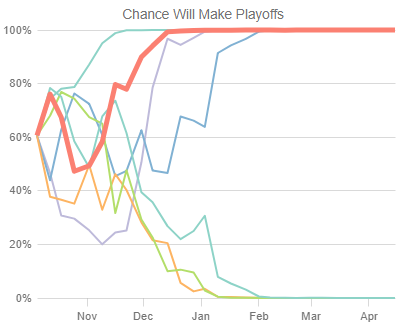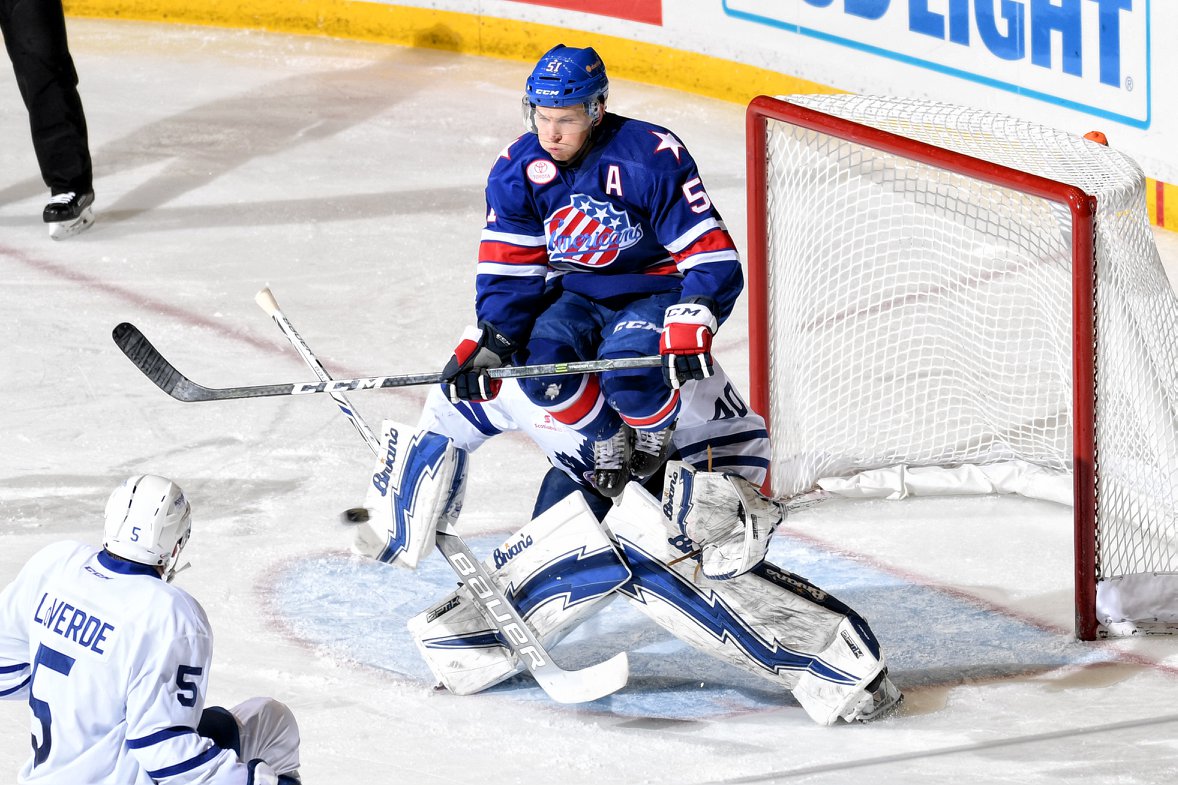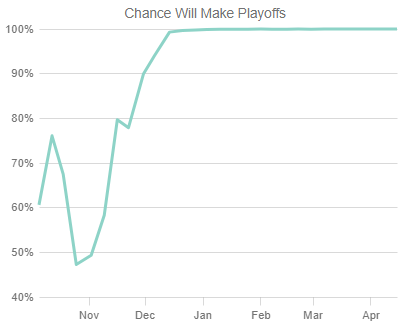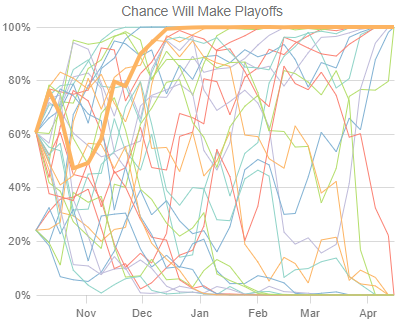Is it October yet? That’s the question hockey addicts ask all summer waiting for a new season to start. The regular season starts in October but it’s time we accept September as the start to the new season. The Prospects Challenge, NHL training camp, NHL preseason games, AHL training camp and AHL preseason games all before the end of September.
There’s a lot to get caught up heading into the Prospects Challenge but before we do that it’s time to give a quick overview of last season.
A New Way of Thinking
The 2017/2018 season was the first season in a long time where winning became a necessity, it was a new beginning and a giant step in the right direction for the organization. Not long ago the way of thinking was that an AHL team existed to only develop players and how the team did overall was secondary. Individual success first, team success second. In one season Randy Sexton and Chris Taylor (obviously with the help of Jason Botterill) were able to change the way of thinking within the organization. Individual success would come from team success. There’s another way to describe this that everyone is probably sick of hearing – culture change. The long term goal is that winning will work its way up. Internal competition continues to be another way of talking about the culture change.
Those are all fantastic buzz words but they wouldn’t have any substance without players willing to accept the shift and they did just that from the first day of training camp. The preseason buy-in lead to the regular season getting off to a hot start.
Early Season Advantage
A hot start to the season carried the team through the rough times later on in the season. Those rough times were due to injuries, callups, player movement, the Olympics (Brian Gionta leaving the practice squad), slumps and overall comfort in the standings.
Based on the charts below (from Sports Club Stats) the chances of the Amerks making the playoffs was at 100% halfway through December, approximately 30 games into the season. The combination of superb goaltending, team chemistry and finding ways to win games (and earn points – see topic below) along with help from the bottom of the North Division not playing well paved the way for a path to the playoffs before the halfway point of the season. They were also competing as one of the best teams in the league going into the All-Star break in January.
Here’s what the North Division looked like (Amerks in orange/red). Toronto was the league leading team all season, and Calder Cup Champions, in green. Syracuse was next in line in purple followed by Utica in blue. Belleville (orange), Binghamton (light green) and Laval (teal) never had a chance in the most dominating division in the league.
 League wide there was only two other teams that had a playoff chance locked in before January 1, Toronto and Manitoba (Amerks are in orange).
League wide there was only two other teams that had a playoff chance locked in before January 1, Toronto and Manitoba (Amerks are in orange).
The playoff spot early in the season didn’t give the team an advantage in the playoffs but it provided a great cushion when wins became challenging. Proves that wins in October and November are as important as wins in March and April.
Goaltending
The team won with Linus Ullmark, lost with Linus Ullmark and loved Linus Ullmark. He was an AHL All-Star for the second straight season as one of the leagues best goalies. The team made the playoffs because of his stellar start to the season. The playoffs were a different story. There wasn’t a player on the team that took the playoff losses as tough as Ullmark, he owned up to it.
Very emotional Linus Ullmark as the #Amerks season comes to an end. Ullmark was named Rochester MVP by his teammates, but allowed 16 goals in three playoff games #Sabres @WKBW pic.twitter.com/8Hb0c43dil
— Matthew Bové (@Matt_Bove) April 26, 2018
He spent the last month of the season in Buffalo where he took a puck off the helmet in a practice and had a minor concussion. That time away from the ice likely had an impact on his timing and play in the playoffs allowing 18 goals against in three games.
Overtime Games and a Losing Record
The Amerks tied a league record with 29 overtime games (9-11 OT, 3-6 SO). They also finished the season with more losses than wins. Rochester finished with an impressive 91 points in the standings but it’s still important to remember the details behind the points.
The combined overtime and shootout losses was an extra 17 points in the standings. At the end of a night a point is a point. Binghamton and Belleville finished 28 points behind the Amerks in the standings so the individual point in overtime/shootout losses didn’t make a difference in the standings. What those games do show is that wins weren’t always easy and winning in extra time was a challenge.
First half of the season: 23-8-4-3 (53 PTS)
Second half: 14-14-7-3 (38 PTS)
Final record: 37-22-11-6 (91 PTS)
It will be important in the 2018/2019 season to have success throughout the season, not just at the beginning.
Playoff Blowout
The playoffs weren’t pretty. Syracuse defeated Rochester in three games by scoring six goals in each game and outscored Rochester by an eight goal margin. In order the losses were 6-2, 6-5 and 6-3. Game two was the closest as a one goal game for the final 13:02 of the third period.
Once the series was over it was talked about how the Amerks weren’t prepared for such a physical round and part of that is due to playoff inexperience. The other part was Linus Ullmark playing poorly in the series. It also didn’t help that CJ Smith and Sahir Gill were playing injured. It’s not fair to place blame on the series loss to those three players but they’re just quick examples.
Syracuse was faster, stronger, healthier and dominated from the puck drop in every game.
There was a time in Rochester that seasons were measured between Calder Cup wins and appearances. Making the playoffs is a minor step but getting blown out isn’t something to celebrate. The last time the Rochester Americans won a playoff series was the 2004/2005 season.
The Hunger for More
Players like Linus Ullmark, Justin Bailey, Nick Baptiste and Alexander Nylander all had previous seasons in Rochester where they didn’t make the playoffs. Other players like Nathan Paetsch, Colin Blackwell, Kyle Criscuolo and Danny O’Regan all had previous playoff experience.
When everyone walked out of the arena last April for the final time there was a hunger for more, no one was happy with the way the season ended.
Everything above is history and just a quick recap of how last season ended. There were highs, lows and whether or not the changes have a long lasting effect will be seen when a new season starts in less than 30 days. The groundwork has been set to build on the success.
We’ll get the first look when the 2018 Prospects Challenge kicks off September 6 at HarborCenter in Buffalo.



